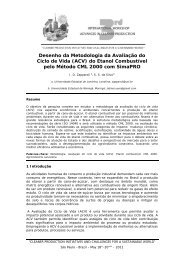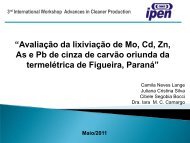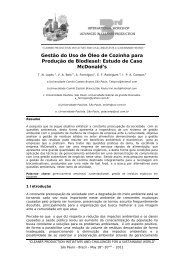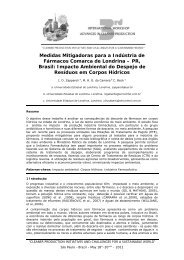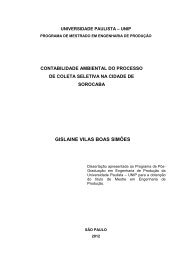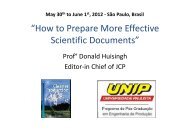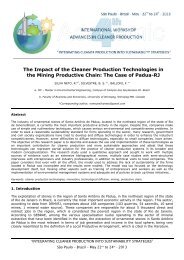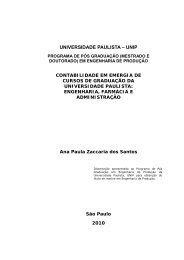Emergy as a tool for Ecodesign - Advances In Cleaner Production
Emergy as a tool for Ecodesign - Advances In Cleaner Production
Emergy as a tool for Ecodesign - Advances In Cleaner Production
You also want an ePaper? Increase the reach of your titles
YUMPU automatically turns print PDFs into web optimized ePapers that Google loves.
C.M.V.B. Almeida et al. / Journal of <strong>Cleaner</strong> <strong>Production</strong> 18 (2010) 32–43 41<br />
Fig. 10. ELR (top) and total emergy (bottom) of the production life cycle of PET bottles considering different rates of recycling.<br />
recycling of 194 tons of post-consumer PET in this year, or the<br />
equivalent to 51.3% in weight of the total output.<br />
Along with the data found in the literature [68–70,78],<br />
a commercially available PET bottle w<strong>as</strong> evaluated. The 2 L PET<br />
bottle is 300 mm thick, and accordingly to the limits determined by<br />
ANVISA [69], it h<strong>as</strong> a maximum layer of recycled material of<br />
200 mm. Considering that all post-consumer PET in 2006 w<strong>as</strong><br />
constituted of this specific type of bottle, the recycling rate of PET<br />
bottles would be 67% kg/kg.<br />
Fig. 10 shows the possibilities <strong>for</strong> PET recycling according to the<br />
different in<strong>for</strong>mation found about PET recycling in Brazil. It is clear<br />
that the more PET is recycled, the less will be the environmental load<br />
and the less the use of resources. The emergy invested <strong>for</strong> the<br />
implementation of the recycling stage is very low in face of the<br />
savings related to the use of raw materials and other inputs. It is clear<br />
that the product ELR <strong>Emergy</strong>/FU represents the correctness of<br />
each material selection under an environmental point of view. The<br />
lower the product ELR <strong>Emergy</strong>/FU, the better the selection to be<br />
done, but a critical analysis permits to visualize that a small product<br />
alone does not satisfy a sufficient condition. However, supposing the<br />
designer is free to choose among aluminum cans (Al or Al-R) and all<br />
the possibilities shown <strong>for</strong> PET bottles in Fig. 10, it would be also<br />
possible, and safer, to analyze the ratio of ELR and the emergy/FU.<br />
The ratio of ELR and the emergy per functional unit may bring<br />
more in<strong>for</strong>mation. The inverse of the emergy per functional unit may<br />
be <strong>as</strong>sociated to the global productivity (GP) of each material [79].<br />
Fig. 11 shows the relationship between ELR and the global<br />
productivity <strong>for</strong> aluminum (Al and Al-R) and <strong>for</strong> PET bottles. Each<br />
point represents the values of ELR and GP <strong>for</strong> each material choice<br />
covering all the recycling rates shown in Fig. 10.<br />
Fig. 11. ELR versus GP, where GP is the inverse of the emergy per functional unit (FU ¼ 1000 L of beverage). The descendant arrow indicates the direction <strong>for</strong> better material<br />
selection.




